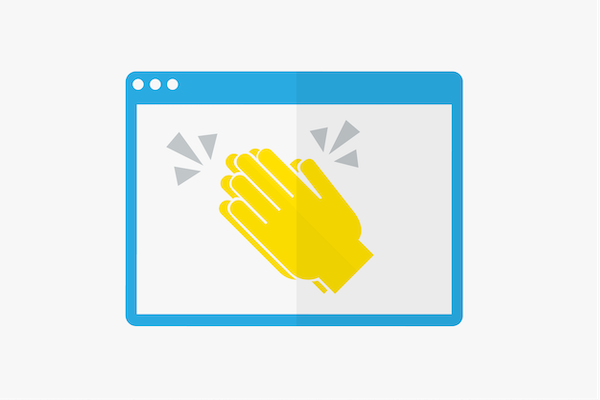Applause Rate
The applause rate shows social media users how many positive signals they receive on contributions. On Facebook for example, the applause rate includes the number of likes. Unless combined with other criteria, the applause rate is only meaningful to a limited extent.
General information
The applause rate is calculated using the following formula:
Applause Rate = Number of Likes : Number of Contributions
The denominator gives information about the number of posted contributions over a certain period of time. The counter shows the corresponding likes to this contribution. The clearer the benefit of determining the applause rate, the less effort needed for the measurement. The use of an analysis tool is usually not necessary with a clear number of contributions. In order to get a ratio to the success rate of the applause rate, you should do a comparison with your own postings from the past or a look at the activities of the competition is recommended.
A “Like” alone does not indicate anything about the quality of the contribution or the motivation of the users who liked the contribution. Nevertheless, it is possible to determine a tendency in the medium and long term. For example, if contributions containing special offers or discounts are liked more, one can assume that the users see a benefit from a contribution by their financial advantage, and reward the contributor for this. Emotional likes can also be promising. Likes can also result if compassion or humour is appealed to or provoked. On the basis of the evaluation of the motivation of the Like donors, the applause rate gains more expressiveness in order to gain deeper insights, but other methods are also useful. These include the Amplification Rate and the Conversation Rate. The Amplification Rate determines the range of contributions, the Conversation Rate gives information about how often contributions were commented and shared. The combination of the three measurements gives a more complete picture of the effect of posts[1]..
The interaction rate as support for the applause rate
As already mentioned, the applause rate does not give much more than a rough tendency. It can even lead to incorrect conclusions, because the number of Likes alone does not give any information about what the users think or want. There are lots of funny images on facebook that are popular and gain a lot of likes, but if no concrete need is addressed, these sorts of pictures will not be accompanied by long term entrepreneurial success. More important is what happens after publication and the likes. This can best be determined with the interaction rate. If you consider the number of comments and shares in addition to the likes, you can get a more complete picture, because the needs and opinions of the users are better depicted in this way. Future postings can be better and more accurately targeted to the users.
The combination of applause rate and interaction rate can be complemented by involving the users. As a Like says nothing about the motivations of the users, it makes sense to ask them about it. This also has the advantage that users are consciously involved, which they often appreciate. In addition, further likes, comments and divisions can be achieved through questions[3].
Evaluation of the applause rate
The pure applause rate can be easily carried out without much effort, but this will not result in profitable insights. To obtain a more complete picture, other aspects have to be considered, for example the number and timing of the posts, the engagement rate, favorites or best fans are among them. When more factors are involved, a reliable evaluation is only ultimately possible if appropriate tools are used[4]. The market offers numerous solutions here so that the activities of the users can be better classified and lead to comprehensible measures.
Significance for Social Media
The applause rate on its own does not have a significant benefit, because it provides figures but no background information. Nevertheless, it is indispensable for social media as a basis, because a fundamental trend can be seen from the likes and corresponding other buttons (+1 on Google Plus, etc.). If one goes further into depth with the help of additional instruments, valuable information can be drawn from it, which in turn can help to improve the appearance in social media and thus the position of the company.
References
- ↑ Applause Rate digitalshiftmedia.com. Accessed on May 31, 2017

